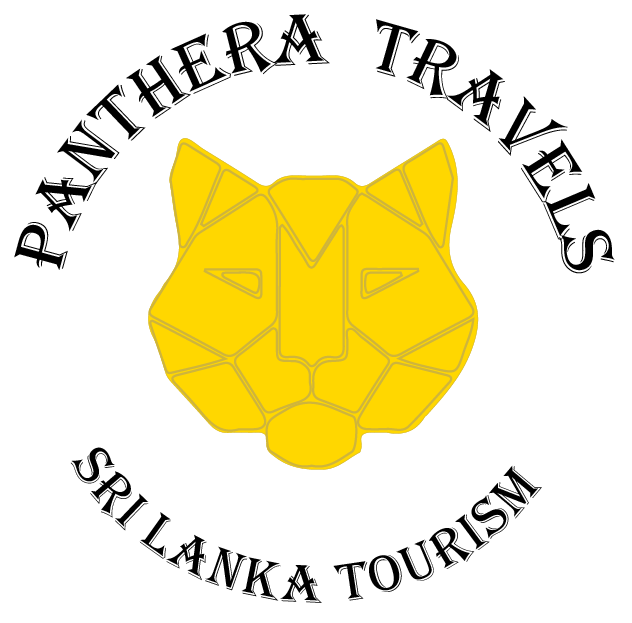Madu River Boat Safari

Location : Southern Province, Sri Lanka
Coordinates : 06°16′N 80°02′E
Elevation : 0 m
Avg temperature: 25c to 35c
Humidity : 75% to 90%
Governing body: Urban Council
Population : 67,432
The Madu River is a minor watercourse that originates near Uragasmanhandiya in the Galle District before widening into the Madu Ganga Lake at Balapitiya. The river then flows for 4.4 km before draining into the Indian Ocean. It is located 124 km from Colombo, 18 Km from Bentota, and 49 km from Galle.
We have written a separate article about the Bentota and Galle Cities tour for those interested; the link follows immediately.
https://pantheratravels.com/bentota-to-galle-day-tour/
Madu River boat riding is essential when experiencing Sri Lanka’s natural beauty and tranquility. Nestled in the southwestern part of the island, Madu River is a picturesque river that winds its way through lush mangrove forests and serene landscapes. This enchanting river offers a unique opportunity to immerse yourself in the natural wonders of Sri Lanka.
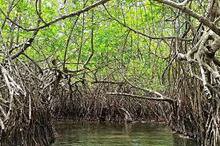
Embarking on a boat ride along the Madu River allows you to explore the fascinating mangrove ecosystem that thrives in this region. Gliding through the calm waters, you will be surrounded by towering mangrove trees, their roots creating a labyrinth of tunnels and pathways. These mangroves provide a vital habitat for numerous species of birds, fish, and other wildlife.You can see the mangrove distribution in Sri Lanka using the link immediately.
https://lankamangrovemuseum.lk/mangroves-distribution-map-of-sri-lanka/
The Madu River’s wow factors are everywhere, from its origin to where it drains into the Indian Ocean. The river itself is rich in biodiversity. The Madu Lagoon, where the river flows to the estuary, is home to many unique attractions that can be explored with a boat ride across the Madu Ganga. It is Lanka’s largest natural lake and measures 5 km from north to south, covering an area of almost 10 square kilometers.
The soggy wetlands now have 25 islets across the river and lagoon, only 15 of which are considerable in size. History says there were 64 of them, and they drowned over time. All of them are filled with shrubs and woods, and some are inhabited.
Madu River and the smaller Randombe Lake form the Madu Ganga wetland area covering 61 hectares. With the help of its mangrove forests and vegetated banks, the region gives birth to a worth-researching coastal wetland ecosystem of high ecological and biological importance.

Bio-diversity is critical as one of the country’s last remaining tracts of pristine mangrove forests. 14 of the 24 species of mangroves are seen here. There are 303 species of plants out of 95 families, 19 of which are endemic. Two hundred forty-eight species of vertebrates also account for its animal wealth.
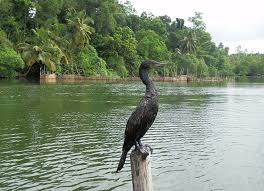
There are over 111 bird species, 31 types of reptiles, over 50 kinds of butterflies, and 25 kinds of mollusks. Wild boars are mostly seen here.
A beautiful Buddhist temple with a fig tree and image houses are located on one of the inhabited islands (Koth Duwa).
Cinnamon Island is the main attraction; visitors can witness the cinnamon process. Ma Doowa is the largest island in the lake, with a diameter of one Kilometre.

It has a bridge sprawling 330 meters across the lake, connecting the island with Balapitya. Even the smallest island, Satha Paha Duwa, has a shrine dedicated to Kataragama. The thick mangrove vegetation and the land are fantastic birding territories.
Let’s explore the beautiful sceneries of boat safari.
Kothduwa Temple

One such island is Kothduwa Temple Island, which houses a Buddhist temple dating back to ancient times. The temple is known for its intricate wood carvings and beautiful statues, making it a fascinating place to explore.
The temple is believed to have once sheltered the sacred relic of the Buddha’s tooth. Deva Pathiraja, a minister to one of the ancient kings, Parakramabahu IV, planted the Bodhi tree on the island from a Jaya Sri Maha Bodhi bud.
Cinnamon island

Another island worth visiting is Cinnamon Island, where you can learn about the traditional cinnamon cultivation and extraction process. Here, you will witness the skilled workers peeling the cinnamon bark and drying it in the sun. The aroma of fresh cinnamon fills the air, creating a truly sensory experience. You can try some cinnamon tea or other cinnamon products. Ceylon cinnamon is considered the best in the world.
Five cents island (Satha paha duwa)
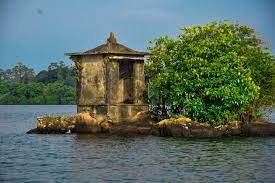
The smallest islet in Madu River is Five Cents Island (Satha Paha Doowa). The name is derived from its shape or small size, which resembles an early five-cent Rupee coin. Nonetheless, Five Cents Island is big enough to carry a temple. The shrine is dedicated to Kataragama, a deity worshipped by Buddhists and Hindus. You are getting out of the boat to this. You will see this while you are riding close to the island.
Experiencing Fish Therapy
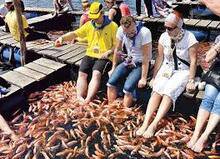
One of the unique highlights of Madu River boat riding is the fish therapy experience. As you navigate the river, you will come across small fish spa centers where you can immerse your feet in the water and let the tiny fish gently nibble away dead skin cells. This natural exfoliation treatment is relaxing and leaves your skin feeling smooth and rejuvenated.
Prawn fishing traps.

Madu River provides breeding grounds for many fish species. Pots for catching prawns can be seen in shallow areas. Fishermen still use traditional fishing traps. In the evening, they light lanterns on the traps to attract prawns and collect them in the morning. You are getting out of the boat to this. You will see this while you are riding close to traps.
Experiencing through Mangrove tunnels

Thick mangrove vegetation is prevalent along almost all the Madu River Lake banks, particularly at its islets. During your boat ride, you should at least twice cross a mangrove thicket, gliding under the canopy of the forest tunnels. The mangrove forest covers over 60 hectares and is scattered in different areas.
Tasting king coconut on the boat
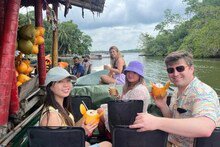
There are small shops built on coconut trunk pillars in the river. Not only do they sell king coconut, but they also have tasty and nutritious Kirala (Sonneratia caseolaris) fruit juice. You will enjoy those.
Savoring a Seafood Feast
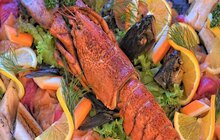
No trip to the Madu River is complete without indulging in a delicious seafood feast. You will find restaurants along the riverbanks serving various fresh seafood dishes. From succulent prawns to mouth-watering crab curry, you can savor the flavors of the ocean while enjoying the scenic views of the river.
That’s the end of the boat safari on the Madu River.
You must wear a safety jacket provided by the boatmen. Littering to the river is prohibited.
Whether you are a nature enthusiast, a history buff, or simply seeking a peaceful escape, Madu River boat riding offers a memorable experience for everyone. The untouched beauty of the mangrove forests, the cultural richness of the small islands, and the unique fish therapy make it a destination worth exploring in Sri Lanka.
So, if you find yourself in this beautiful island nation, don’t miss the opportunity to embark on a Madu River boat ride and immerse yourself in the serene beauty that awaits you.

Hope you enjoyed the article. You can scroll down to our featured posts. Before you go to featured posts, Subscribe to read our new posts. We never use this email for promotions and offers. Our only purpose is for you to read our valuable content.
Featured Blog Posts

- Featured, Places
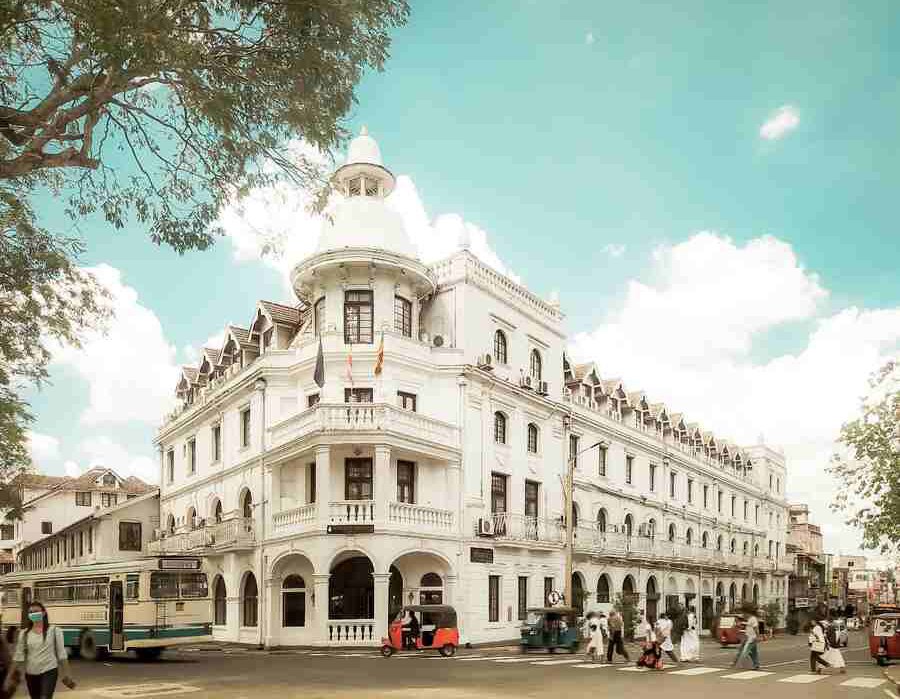
- Featured, Places

- Featured, Travel tips

- Featured, Places

- Activities, Featured
